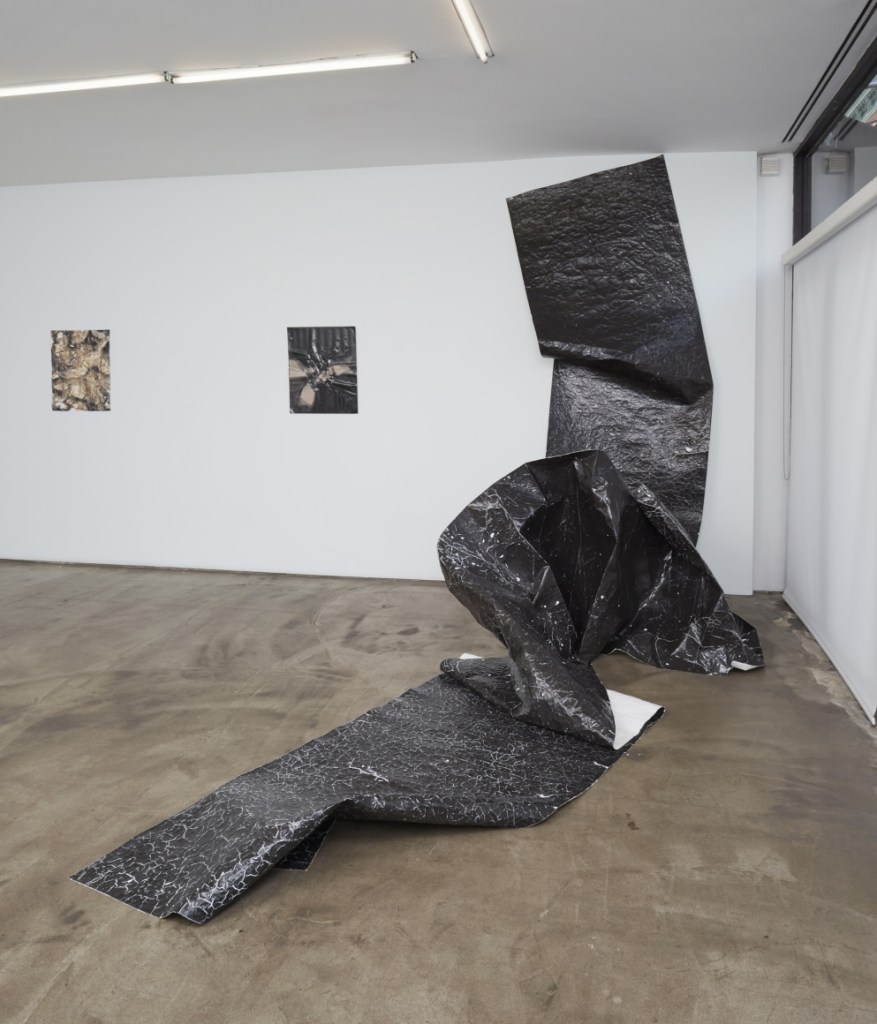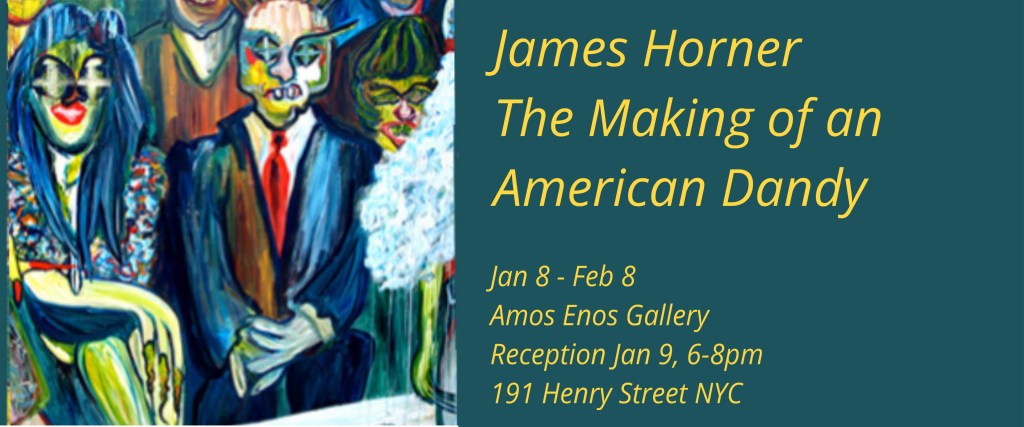
Contributed by Adam Simon / Lately I find myself wondering what impact the ubiquity of cellphone cameras is having on the practice of fine-art photography. As frustrating as it might be for the serious photographer to see everyone and their cousin constantly taking and posting pictures, one salient effect could be a rising inclination to explore the limits of what defines a photograph. There has been a resurgence of interest in photograms and camera obscura for some time now, and Joy Episalla’s current show of works labelled ‘foldtograms’ on view at Tibor de Nagy are even further removed from the idea of capturing an image. What replaces it is a very physical interaction between the artist and the basic materials and components of photography – photo paper, chemicals, and light.


Episalla is showing nine pieces, seven on the walls and two that mostly sit on the floor. The floor pieces read as sculpture, but all the works use photo paper that has been subjected to various processes: the chemical one that normally produces photographs (develop, stop, fix, and wash – for Episalla , not necessarily in that order); exposure to light; the physical manipulation of the paper; and, in at least one instance, burning. The palette is muted, limited to black and white, grey and brown, imparting an urban elegance at odds with imagery that evokes geology – deterioration as well as slow accretion, gradual organic processes that transform matter over long periods. I felt I was experiencing the kind of rough beauty that one comes across out in the world, unexpectedly, as when noticing the way water or light can alter the most obdurate substances.

Chance clearly plays a prominent role, situating the work closer to the dialogue with materials associated with abstract painting than to the more willful process of selecting a subject and aiming and shooting a camera. At the very beginning of her classic essay “On Photography,” Susan Sontag writes: “To photograph is to appropriate the thing photographed. It means putting oneself into a certain relation to the world that feels like knowledge – and, therefore, like power.” In addition to blurring distinctions between photography, painting, and sculpture, and thereby challenging the very nature of the need to define, Episalla’s exhibition embraces an approach to images distinct from the power relations Sontag identifies with photography.


Episalla has been an AIDS activist since the 1980s and was a founding member, in 1991, of the lesbian collective fierce pussy. fierce pussy began as a female affinity group within Act UP, focusing on lesbian visibility and homophobia. At the first meeting, it was determined that each time they met they would collaboratively create posters that would then be wheat-pasted outdoors around NYC. An example is the poster that begins, “I Am A …,” followed by a list of pejorative terms for lesbians and ending with “… AND PROUD.” The collective continues to this day with four of the original members, Nancy Brooks Brody, Episalla, Zoe Leonard and Carrie Yamaoka.


There is a metaphorical connection between Episalla’s dialogue with materials, the incorporation of chance occurrences, and the relinquishment of control that collaborative work with fierce pussy requires. Beyond that, sidestepping the power relations connected to camera work, as identified by Sontag, and engaging in an endeavor that is neither photography, sculpture, nor painting, all connects to Episalla’s work with fierce pussy. The connection is important, not as a way of legitimizing artwork that might otherwise be seen as “merely” abstract, but as a reference to the inherent radicality of Episalla’s abstraction, and its ability to embody layers of complexity and experience.
“Joy Episalla: crack fold burn bright,” Tibor de Nagy, 11 Rivington Street, New York, NY. Through July 29, 2022.
About the Author: Adam Simon’s recent paintings combine corporate logotypes, stock photography, and tropes of Modernist design. He he recently had work on view in “Mind the Gaps” at Osmos Address and in “MOD” at Platform Project Space.






















